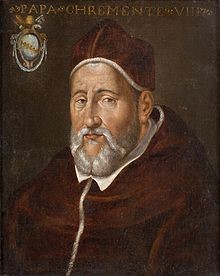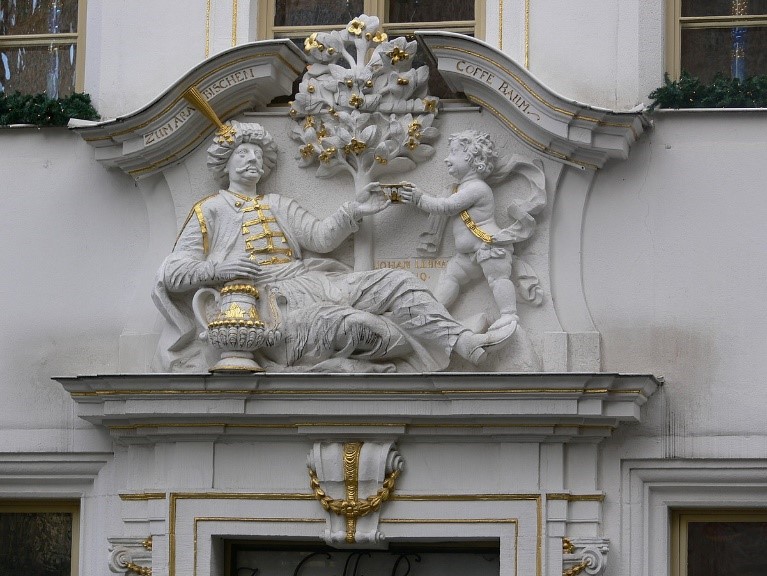Caffeine: How Caffeine Created the Modern World by Michael Pollan
Amazon Description
Michael Pollan, known for his best-selling nonfiction audio, including The Omnivores Dilemmaand How to Change Your Mind, conceived and wrote Caffeine: How Caffeine Created the Modern Worldas an Audible Original. In this controversial and exciting listen, Pollan explores caffeine’s power as the most-used drug in the world – and the only one we give to children (in soda pop) as a treat.
Pollan takes us on a journey through the history of the drug, which was first discovered in a small part of East Africa and within a century became an addiction affecting most of the human species.
Caffeine, it turns out, has changed the course of human history — won and lost wars, changed politics, dominated economies. What’s more, the author shows that the Industrial Revolution would have been impossible without it. The science of how the drug has evolved to addict us is no less fascinating. And caffeine has done all these things while hiding in plain sight! Percolated with Michael Pollan’s unique ability to entertain, inform, and perform, Caffeineis essential listening in a world where an estimated two billion cups of coffee are consumed every day.
How Coffee Created the Modern World
Author Michael Pollan discusses his latest work on the world’s most-used psychoactive substance. It is the world’s most-used drug, one many of us simply refuse to live without, opting for addiction over the loss of that first, or second, or in some cases the third cup that gets us through the day and now its seductive powers, its dark history, its health benefits, and its harmful side effects are on full display in best-selling author Michael Pollan’s new audiobook “Caffeine: How Coffee and Tea Created the Modern World.”
Pollan explains in a section of the audiobook on the substance’s origins that caffeine was first discovered in China around 1000 B.C. in the form of tea. The discovery of coffee is traced to Ethiopia around 850 A.D.
According to the legend, a herder who noticed how jumpy his goats got after eating the berries of an arabica plant gave some of the berries to a local monk, who used them to concoct the world’s first cup of coffee. As time went on, caffeine’s history took a dark turn. Growers and sellers built the industry on the backs of enslaved people forced to harvest both the coffee beans and the sugar needed to sweeten the bitter drink that had become increasingly popular in the West.
He also suggests that the consumption of caffeinated drinks even might have helped societies that embraced them to thrive. According to Pollan, caffeine drove a kind of “Enlightenment thinking.”
The coffee houses that stretched first across the [Muslim Civilisation] and eventually Europe became not only the internet of their day, spreading gossip and news, but also centres of discussion that fostered important cultural, political, and scientific exchanges and helped usher in a “new spirit of rationalism.”
It was an Ottoman merchant named Pasqua Rosee [Paşa Rıza] who first brought coffee to England in 1650, selling it in a coffeehouse in George-yard, Lombard Street, London. Eight years later, another coffeehouse called Sultaness Head was opened in Cornhill. Lloyd’s of London, today a famous insurance company, was originally a coffee shop called Edward Lloyd’s Coffee House. This is an illustration depicting Edward Lloyd’s Coffee House, established in the 17th century. (Source)
nypost.com: Pollan goes so far as to assert that the stimulant created the modern world.
“It is hardly an exaggeration to say that the arrival of caffeine in Europe changed . . . everything,”
He continues to write: “Coffee and tea ushered in a shift in the mental weather, sharpening minds that had been fogged by alcohol, freeing people from the natural rhythms of the body and the sun, thus making possible new kinds of work and, arguably, new kinds of thought, too.”
He notes that coffee first made its way from East Africa to the Arabian Peninsula in the 15th century, at a time when the Islamic world was more advanced in the sciences than Europe. In the 16th century, the Ottoman Empire had hundreds of coffeehouses, and some historians have linked the rise of java in the Islamic world with the advent of modern mathematics.
In the early 17th century, the first coffeehouse in Europe opened in Venice, and thousands soon followed, creating a new kind of intellectual space. Pollan writes: “You paid a penny for the coffee, but the information — in the form of newspapers, books, magazines and conversation — was free…”
In England, it helped labourers work long hours in harsh conditions, and when sweetened with sugar provided a cheap source of calories. Pollan writes: “It’s difficult to imagine the Industrial Revolution without it…”
[However, Pollan concludes this comment by:] “Capitalism, having benefited enormously from its symbiotic relationship with coffee, now threatens to kill the golden goose.”
A 16th-century manuscript shows a traditional Muslim coffeehouse. (Source: 1001 inventions)
theguardian.com: By the 15th century, coffee was being cultivated in East Africa and traded across the Arabian peninsula. Initially, the new drink was regarded as an aid to concentration and used by Sufis in Yemen to keep them from dozing off during their religious observances. (Tea, too, started out as a little helper for Buddhist monks striving to stay awake through long stretches of meditation.) Within a century, coffeehouses had sprung up in cities across the Arab world. In 1570 there were more than 600 of them in Constantinople alone, and they spread north and west with the Ottoman empire.
The Islamic world at this time was in many respects more advanced than Europe, in science and technology, and in learning. Whether this mental flourishing had anything to do with the prevalence of coffee (and prohibition of alcohol) is difficult to prove, but as the German historian Wolfgang Schivelbusch has argued, the beverage “seemed to be tailor-made for a culture that forbade alcohol consumption and gave birth to modern mathematics”.
In 1629 the first coffeehouses in Europe, styled on Arab and Turkish models, popped up in Venice, and the first such establishment in England was opened in Oxford in 1650 by a Jewish immigrant. They arrived in London shortly thereafter and proliferated: within a few decades there were thousands of coffeehouses in London; at their peak, one for every 200 Londoners.
Coffee Baum relief over the door of a Leipzig coffee shop showing a sculptural representation of a man dressed in Turkish-style clothing receiving a cup of coffee from a boy. The man is sitting in front of a coffee tree. Café und Museum “Zum arabischen Coffe Baum”, Leipzig, Germany, Relief über dem Eingang. This photo was taken in December 2007 by Andreas Praefcke. – Wikipedia
Related Links:
- theguardian.com: The invisible addiction: is it time to give up caffeine?
- nypost.com: How coffee fueled literature, the French Revolution and Union Army victory
- news.harvard.edu: How caffeine changed the world
- wsj.com: How Coffee Became a Modern Necessity
- portafilter.net: 9 Coffee Brewing Methods: Learn How to Brew the Best Coffee!
- michaelpollan.com
- muslimheritage.com: On the Coffee Trail and The Coffee Route from Yemen to London 10th-17th Centuries
The history of coffee dates back to centuries of old oral tradition in modern day Jimma, Ethiopia. Coffee was first cultivated in Ethiopia, then later introduced to other countries. In the 15th century, Sufi monasteries in Yemen employed coffee as an aid to concentration during prayers.
Coffee later spread to the Levant in the early 16th century; it caused some controversy on whether it was halal in Ottoman and Mamluk society. Coffee arrived in Italy the second half of the 16th century through commercial Mediterranean trade routes, while Central and Eastern Europeans learned of coffee from the Ottomans. By the mid-17th century, it had reached India and the East Indies.
Coffeepot (cafetière “campanienne”), part of a service, 1836, hard-paste porcelain, Metropolitan Museum of Art
Coffee houses were established in Western Europe by the late 17th century, especially in Holland, England, and Germany. One of the earliest cultivations of coffee in the New World was when Gabriel de Clieu brought coffee seedlings to Martinique in 1720. These beans later sprouted 18,680 coffee trees which enabled its spread to other Caribbean islands such as Saint-Domingue and also to Mexico. By 1788, Saint-Domingue supplied half the world’s coffee.
By 1852 Brazil became the world’s largest producer of coffee and has held that status ever since. The period since 1950 saw the widening of the playing field owing to the emergence of several other major producers, notably Colombia, the Ivory Coast, Ethiopia, and Vietnam; the latter overtook Colombia and became the second-largest producer in 1999. Modern production techniques along with the mass productization of coffee has made it a household item today.
Etymology
The word coffee entered the English language in 1582 via the Dutch koffie, borrowed from the Ottoman Turkish kahve (قهوه), borrowed in turn from the Arabic qahwah (قَهْوَة). Medieval Arab lexicographers traditionally held that the etymology of qahwah meant ‘wine‘, given its distinctly dark color, and derived from the verb qahiya (قَهِيَ), ‘to have no appetite‘.
The word qahwah most likely meant ‘the dark one’, referring to the brew or the bean; qahwah is not the name of the bean, which are known in Arabic as bunn and in Cushitic languages as būn. Semitic languages had the root qhh, “dark color”, which became a natural designation for the beverage. There is no evidence that the word qahwah was named after the Ethiopian province of Kaffa (a part of where coffee originates from: Abyssinia), or any significant authority stating the opposite, or that it is traced to the Arabic quwwa (“power”). Kahve in Turkish is word borrowed from Persian word, Qahve قهوه ای, so it means something in Brown colour. Persian land or Iran was in the way of silk road and business path of coffee beans to Turkey and Europe. The terms coffee pot and coffee break originated in 1705 and 1952 respectively….
History
Evidence of knowledge of the coffee tree and coffee drinking first appeared in the late 15th century. Sufi Imam Muhammad Ibn Said Al Dhabhani is known to have imported goods from Ethiopia to Yemen. Coffee was first exported out of Ethiopia to Yemen by Somali merchants from Berbera and Zeila, which was procured from Harar and the Abyssinian interior. According to Captain Haines, who was the colonial administrator of Aden (1839–1854), Mocha historically imported up to two-thirds of their coffee from Berbera-based merchants before the coffee trade of Mocha was captured by British-controlled Aden in the 19th century. Thereafter, much of the Ethiopian coffee was exported to Aden via Berbera.
Berbera not only supplies Aden with horned cattle and sheep to a very large extent, but the trade between Africa and Aden is steadily increasing greatly every year. In the article of coffee alone there is considerable export, and ‘Berbera’ coffee stands in the Bombay market now before Mocha. The coffee shipped at Berbera comes from far in the interior from Hurrar, Abyssinia, and Kaffa. It will be to the advantage of all that the trade should come to Aden through one port, and Berbera is the only place on the coast there that has a protected port, where vessels can lie in smooth water.
Middle East
Sufis in Yemen used the beverage as an aid to concentration and as a kind of spiritual intoxication when they chanted the name of God, Sufis used it to keep themselves alert during their nighttime devotions. The 16th century Umdat al Safwa fi hill al-qahwa عمدة الصفوة في حل القهوة by Abd al-Qadir al-Jaziri, an important early source on the history of coffee, traces the spread of coffee from Arabia Felix (present-day Yemen) northward to Mecca and Medina, and then to the larger cities of Cairo, Damascus, Baghdad, and Constantinople.
By 1414, the plant was known in Mecca, and in the early 1500s was spreading to the Mameluke Sultanate of Egypt and North Africa from the Yemeni port of Mocha. Associated with Sufism, myriad coffee houses grew up in Cairo (Egypt) around the religious University of the Azhar. These coffee houses also opened in Syria, especially in the cosmopolitan city of Aleppo, and then in Istanbul, the capital of the Ottoman Empire, in 1554.
Coffee was also noted in Aleppo by the German physician botanist Leonhard Rauwolf, the first European to mention it, as chaube, in 1573; Rauwolf was closely followed by descriptions from other European travellers.
In 1511, it was forbidden for its stimulating effect by conservative, orthodox imams at a theological court in Mecca. However, these bans were to be overturned in 1524 by an order of the Ottoman Turkish Sultan Suleiman I, with Grand Mufti Mehmet Ebussuud el-İmadi issuing a fatwa allowing the consumption of coffee.] In Cairo a similar ban was instituted in 1532, and the coffeehouses and warehouses containing coffee beans were sacked. During the 16th century, it had already reached the rest of the Middle East, the Safavid Empire and the Ottoman Empire.
From the Middle East, coffee drinking spread to Italy, then to the rest of Europe, and coffee plants were transported by the Dutch to the East Indies and to the Americas….
Europe
Coffee was first introduced to Europe in Hungary when the Turks invaded Hungary at the Battle of Mohács in 1526. Within a year, coffee had reached Vienna by the same Turks who fought the Europeans at the Siege of Vienna (1529). Later in the 16th century, coffee was introduced on the island of Malta through slavery. Turkish Muslim slaves had been imprisoned by the Knights of St John in 1565—the year of the Great Siege of Malta, and they used them to make their traditional beverage. Domenico Magri mentioned in his work Virtu del Kafé, “Turks, most skillful makers of this concoction.” Also, the German traveler Gustav Sommerfeldt in 1663 wrote “the ability and industriousness with which the Turkish prisoners earn some money, especially by preparing coffee, a powder resembling snuff tobacco, with water and sugar.” Coffee was a popular beverage in Maltese high society—many coffee shops opened.
The first mention of coffee in a European text is in Charles de l’Ecluse’s Aromatum et simplicium aliquot medica-mentorum apud Indos nascientum historia from 1575. He learnt of coffee from Alphoncius Pansius in Padua. Englishmen passing through Safavid and the Ottoman Empire in the late 16th century noted that coffee was “very good to help digestion, to quicken the spirits, and to cleanse the blood.”
The vibrant trade between the Republic of Venice and the people of North Africa, Egypt, and the East brought a large variety of African goods, including coffee, to this leading European port. Venetian merchants introduced coffee-drinking to the wealthy in Venice, charging them heavily for the beverage. In this way, coffee was introduced to the mainland of Europe.
In 1591, Venetian botanist-physician Prospero Alpini became the first to publish a description of the coffee plant in Europe. The first European coffee house apart from those in the Ottoman Empire and in Malta was opened in Venice in 1645.
The first route of travel for coffee was through the massive, sprawling Ottoman Empire that allowed transportation of goods such as coffee to make their way well into Europe, and the second route of travel was from the port of Mocha in Yemen, where the East India Trading Co. bought coffee in masses and transported it back to mainland Europe. Coffee became a crucial part of the culture in most of Europe, with queens, kings, and the general public all becoming extensively enthralled with the product. Rather it be through the term ‘coffee arabica’ or the transportation of the drink, the passage of coffee into the Western world greatly resembles that of the scientific knowledge and discoveries passed on by the Islamicate Empires.
The article goes on to describe the arrival of coffee in Austria, the United Kingdom, France, Germany, Italy, The Netherlands, Poland, and the America as well as Asia.
 Pope Clement VIII: The Pope who popularised coffee in Europe among Christians
Pope Clement VIII: The Pope who popularised coffee in Europe among Christians
Neenah Payne writes for Activist Post
Become a Patron!
Or support us at SubscribeStar
Donate cryptocurrency HERE
Subscribe to Activist Post for truth, peace, and freedom news. Follow us on SoMee, Telegram, HIVE, Flote, Minds, MeWe, Twitter, Gab, and What Really Happened.
Provide, Protect and Profit from what’s coming! Get a free issue of Counter Markets today.




Be the first to comment on "How Coffee Created The Modern World"